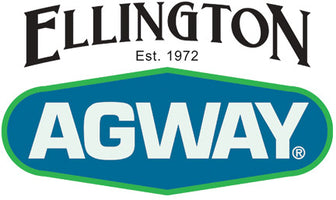 Feed: Use a commercial chick starter for the first 8 weeks. On the first day cover the litter with newspaper and spread some feed on the papers and also have your feeders full. This will allow the new birds to find the feed. Use a 2 foot feeder for each 25 chicks. After the first day remove the papers.
Feed: Use a commercial chick starter for the first 8 weeks. On the first day cover the litter with newspaper and spread some feed on the papers and also have your feeders full. This will allow the new birds to find the feed. Use a 2 foot feeder for each 25 chicks. After the first day remove the papers.
Water: Have a 1 gallon chick waterer for each 50 birds. DIP THE BEAK OF THE CHICK IN THE WATER BEFORE YOU TURN IT LOOSE. For best results, add vitamins and electrolytes to the water or for the first 2 days add 3 tablespoons of table sugar to each quart of water. Your birds will be thirsty when you get them. A taste of water right away helps them to find more water soon. Most baby bird loss is caused because the bird doesn’t start to eat or drink. Never let your birds run out of water.
Heat: The temperature where the birds are should be 90 to 95 degrees for the first week. Reduce the temperature 5 degrees per week until you get to 70 degrees. Then they shouldn’t need any more heat. A good source of heat is a 250 watt heat bulb. (Red bulbs are preferred, white may cause picking.) Hang it 18 inches from the floor. The temperature directly under the bulb will be higher than 90 degrees but the birds will adjust themselves to the area they like. Use 1 bulb for each 50 chicks in cold weather. Use 1 bulb for each 100 chicks in warm weather.
Light: If you use a heat bulb, this will also serve as the light you need. Otherwise, be sure to give your birds light. Use a 75 watt bulb on dark days. Have a small light for night — 15 watts or similar — to keep them from piling.
Space: Try to provide 1/2 square foot per bird at the start.
Draft Shield: Cardboard put in a circle about 12 inches high around the birds helps cut down drafts on the floor. Be sure the circle is large enough to allow the birds to get away from the heat if they want to.
Litter: Wood shavings, rice hulls, or ground cobs make good litter. Do not use cedar chips, sawdust (It is too small and the birds may eat it instead of their food), or treated wood chips. Sand, straw, or dirt will also work but are not as good as the others. Put the litter all over the floor at least 1 inch thick. Keep it covered for the first day with newspapers to keep the chicks from eating the litter instead of the feed. To avoid possible leg problems, remove the papers after the first day for heavy breeds and meat birds and after the third day for lighter breeds.
Grit: Starting the 3rd day sprinkle baby grit on the feed daily as if you were salting your food. Avoid putting too much at any one time as the birds may fill up on it instead of the feed.
Picking: Baby birds will often pick each other if they are too hot, too crowded, or without fresh air. Occasionally, bright light also causes them to pick. An ounce of prevention is worth a pound of cure when it comes to picking. Sometimes, however, they pick for no apparent reason. To stop it, try putting in fresh green grass clippings several times a day and darken the room. As a last resort, debeaking might have to be done. Try cutting off about one-third of the top beak. Do not cut the lower beak, just the top one. To treat birds that have been picked, use an anti-pick product or smear black grease on the area injured and keep up the treatment until healed.
If the birds had a hard trip: Instead of using the standard feed and water suggestions listed, try this: Put 6 more tablespoons of sugar in each gallon of water. Then mix some of this extra sweet water with some of your feed to make a soupy mix. Give your birds this special feed and water mix for 3 to 4 days to get them over the effects of shipping.
Rear end “pasting up”: Sometimes the stress of shipping causes the manure to stick to the back of the bird. It is important to remove this daily. Pull off gently, or better yet, wash off with a cloth and warm water. It will disappear in a few days as the bird starts to grow.
After four weeks:
- Increase floor area to 3/4 square feet per bird.
- Increase feeders to provide 2-1/2” to 3” of space per bird. Increase waterers to one 5-gallon waterer per 100 birds.
- Make sure grit hopper is filled with proper sized grit.
- Install roosts at back of brooder area. Allow four inches per bird with roost poles six inches apart.
- Open windows in daytime. Leave only partly open at night.
- To prevent water puddles around waterers, place them on low wire platforms.
- Birds can range outside on warm, sunny days, but only if clean range is available.
